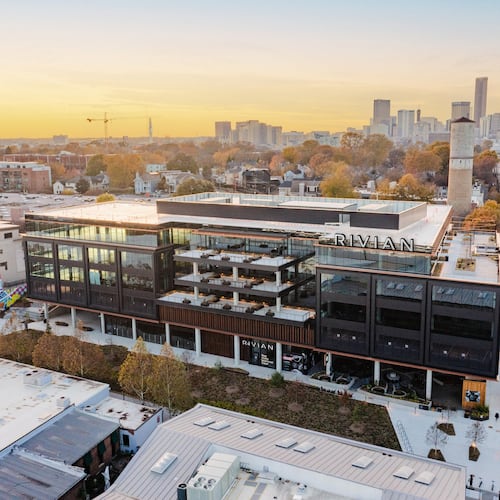EXHIBIT PREVIEW
“Without Regard to Sex, Race, or Color: The Past, Present, and Future of One Historically Black College”
Oct. 23-Nov. 29. Several of the photographs from the book will be on display at the Atlanta University Center's Robert W. Woodruff Library, 111 James P. Brawley Drive S.W. www.auctr.edu.
A fifth-generation Georgian, Andrew Feiler’s photographic “voice” is straight up Southern.
His work seeks to capture the “richness of Southern culture” — the food, the music, the values. Everything from jazz to okra simmering in a pot of gumbo.
Over the years, he had followed the financial and accreditation troubles plaguing Morris Brown College, once one of the South's most prominent black institutions. The college filed for Chapter 11 bankruptcy reorganization in August 2012. Its bankruptcy exit plan was approved earlier this year.
Nearly three years ago, something pinged in his consciousness.
“I knew on a very intrinsic level that this was a powerful and important story,” said Feiler, a native of Savannah. “I just didn’t know if there was a visual way to tell the story or what shape it would take if I had the opportunity to get in these spaces.”
Sixty of his photographs, taken over a yearlong period in 2013, are collected in the book "Without Regard to Sex, Race, or Color: The Past, Present, and Future of One Historically Black College," published by the University of Georgia Press in association with the Georgia Humanities Council.
The 102-page book includes essays by Robert E. James, a 1968 graduate and president of Carver State Bank in Savannah; Loretta Parham, CEO of the Robert W. Woodruff Library of the Atlanta University Center; Pellom McDaniels III, curator of the African-American Collections in Emory University's Manuscript, Archives and Rare Book Library; and Amalia K. Amaki, an artist, writer and film critic.
Many of the photographs are shocking.
Band instruments lie haphazardly on the floor. There’s broken glass on dirty doors leading to the lunchroom. There are large swaths of missing plaster and paint on some of the walls. Ceiling and floor tiles are chipped and broken and lie strewn across the floor. A chemistry lab stands empty.
“I’ve been around abandoned buildings before, but to look at some of these things and remember what the chemistry lab looked like when I was in it, with students excited about the experiments they were working on and teachers moving around…,” said James, trailing off.
Once you get over the sadness, he said, there’s still a story to tell.
“Publishing of this book presents the story, hopefully, to another, broader audience,” said James, who later went on to earn a master’s in business administration from Harvard University. “There is hope for a rebirth. We must reclaim this history and do something to rebuild.”
Several of those photographs will be on display through Nov. 29 at the Atlanta University Center's Robert W. Woodruff Library, 111 James P. Brawley Drive S.W.
“When you think about Morris Brown, you think about a challenged historical black college, but there’s also a rich history of culture and tradition, race, justice, conflict and progress,” Feiler said.
In the book, he also uses photos from days past that show smiling students, classmates hard at work.
Feiler was given a wide berth to photograph the campus. He said it was built on trust between himself and President Stanley Pritchett, who supported the project.
“I went in search of how does the campus today tell a story,” he said. It was an emotional experience.
“You can feel the presence of the people. We’ve all been in classrooms like that, we’ve been in locker rooms, we’ve been in swimming pools and we’ve been in professors’ offices.”
For his part, Pritchett said he was initially concerned about how the project would be viewed. But the more he talked with Feiler, the more he began to see a bigger picture.
“Sometimes you have to look at the rough edges to see what happened,” said Pritchett, who had family members who graduated from Morris Brown. Then you can step back, he said, “polish that stone and see what it can and will be.”
Morris Brown, he said, comes from a proud past, but officials have a plan to revitalize the school, which now has about 40 enrolled students. Enrollment was around 3,000 at its height.
“We do have a bright future,” he said. “We’ve had challenges, but we have to make certain that we get it back to its original luster and there is a strategic plan to be sustainable.”
About the Author
Keep Reading
The Latest
Featured


